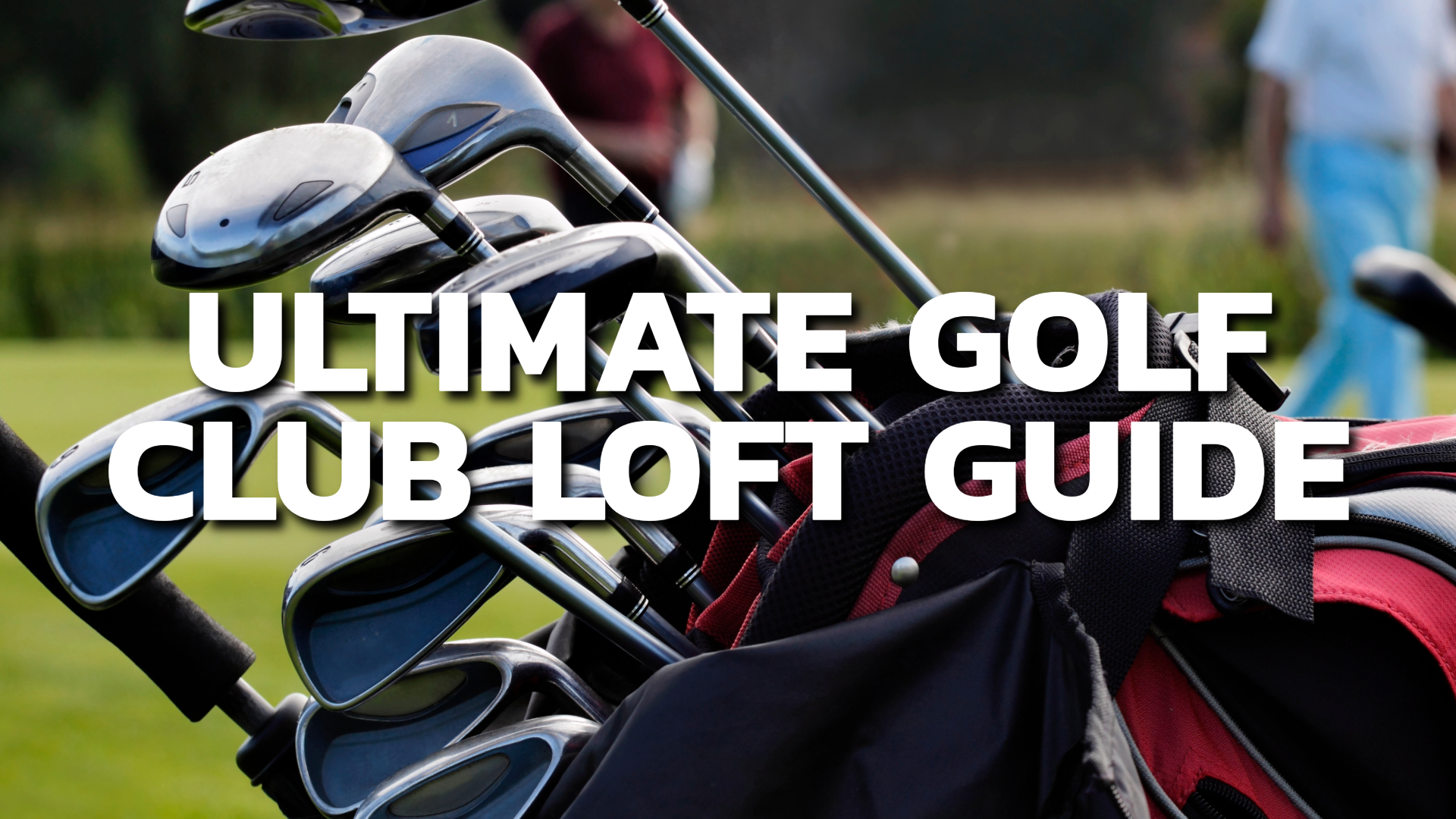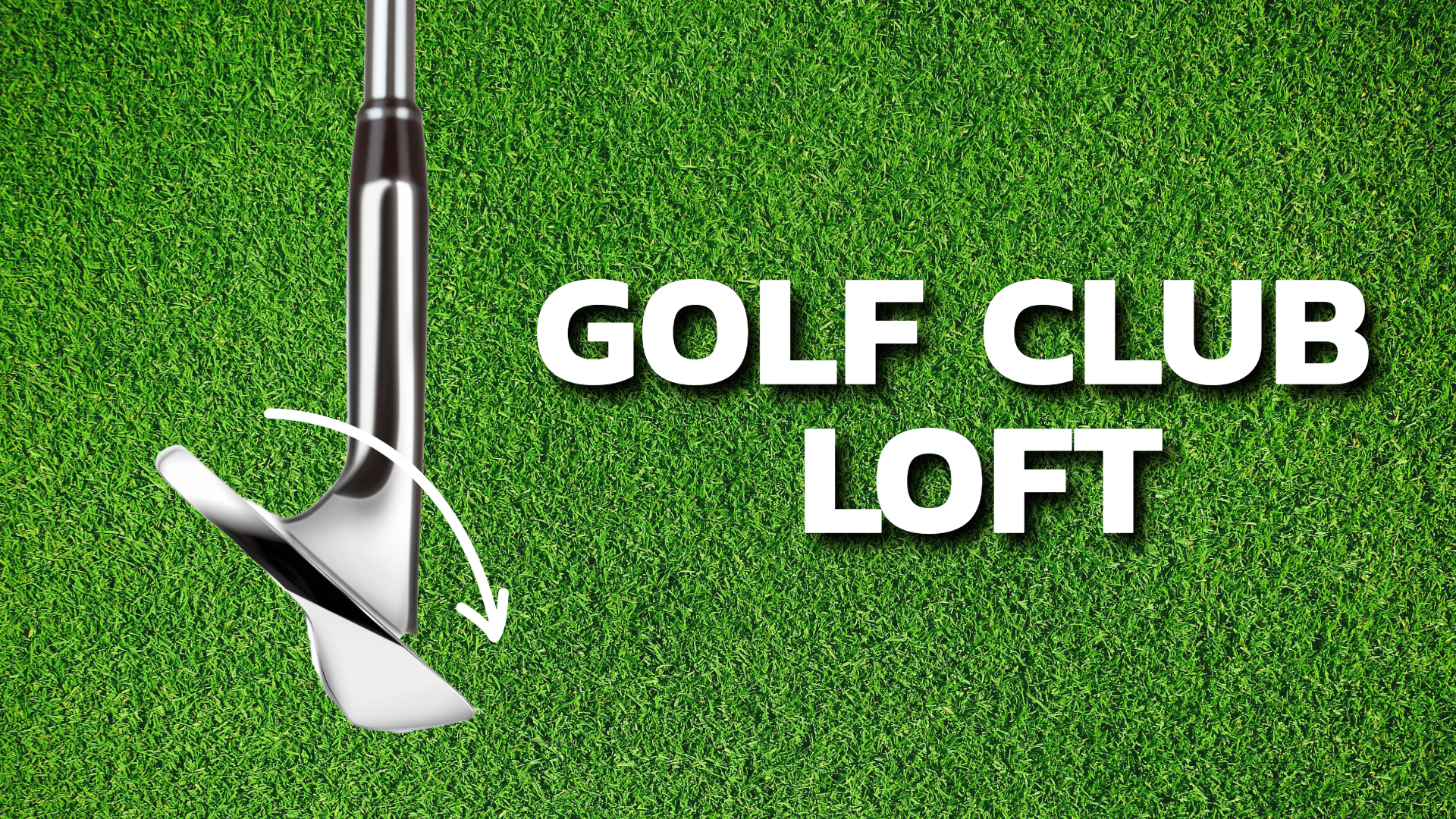
Did you know that choosing the wrong loft on your driver can brutally dampen your distance? When it comes to irons, the wrong loft can lead to missing greens? Not to mention, the wrong putter loft can lead to more costly and frustrating three putts?
Golf club loft is one of the most important factors when buying clubs. If you don’t consider the loft on each type of club, there’s a good chance your equipment is holding you back from lowering your handicap.
Today, we’ll break down golf club loft for everyone including driver, fairway woods, hybrids, irons, wedges and putters. So have a read, go check your equipment, you’ll be set up for success!
Golf Club Loft – What You Need to Know
Before we begin, let’s define it.
Golf club loft refers to the angle (in degrees) of the clubface relative to the ground, which directly affects the trajectory and distance a golf ball travels when hit. The loft angle controls how high the ball will travel when hit, and is a key element in determining shot distance and control.

Lower-lofted clubs (drivers and long irons), have less loft and are designed to hit the ball farther with a lower trajectory, maximizing distance. Alternatively, higher-lofted clubs (wedges) create a steeper launch angle, allowing for shorter, high-arcing shots that land softly on the green.
The variation in loft across different clubs allows golfers to select the ideal trajectory and distance for each type of shot, providing versatility and precision in navigating a golf course. The higher the degree, the higher the loft.
Understanding loft is crucial to maximizing distance, improving accuracy, avoiding big distance gaps; it even determines how well the putt rolls. Let’s start with the driver, and work our way through the bag to better understand the golf club loft basics.
Driver Degree Loft
So what is the normal amount of loft for a driver? As you’ll see with different types of clubs below, it ranges quite a bit.
Let’s start with professional golfers – their driver loft ranges from 7 to 9.5 degrees in general. Most don’t play with 7 or 8 degrees unless they have a ton of swing speed like Bryson DeChambeau, as an outlier example.
In general, pros use a driver that sits around 9 degrees of loft. They relentlessly test their driver with a launch monitor to ensure proper launch angles, spin rates, and carry distance.
Amateur golfers typically use more loft, in the 9-12 degree range. Seniors and ladies might play 13 or 13.5 degrees of loft to help improve launch and maximize carry distance.
A lot of drivers have adjustable hosels as well, this allows you to change the loft and lie angle to straighten out your ball flight. For example, you might have a 9-degree driver, but if it’s adjustable you can take it down to 8-degrees. Or, tweak it up to 10 or 10.15 degrees.
If your driver needs help and you’re fighting a slice, consider the SF1 driver. This revolutionary driver features a 12 degree loft and makes it easy to fix your slice and hit longer drives. It has multiple loft options and different shafts to fit a variety of golfers, too.
Fairway Wood Loft
Next up are fairway woods. These lofts differ depending on the type of wood(s) that make up your set.
- 3-wood: Between 13.5 and 16 degrees. Most standard 3-woods are 15-degrees and a lot of them have adjustability features to add/remove loft. In general, most golfers should use a little more loft if you struggle hitting them from the fairway.
- 5-wood: Between 17 and 19 degrees of loft. The extra loft and shorter shaft makes this club a lot easier to hit than a 3-wood.
- 7-wood: Between 20 and 22 degrees of loft. These high lofted fairway woods are a fantastic alternative for hard to hit long irons.
Some golfers might carry a 9-wood or Heavenwood with even more loft depending on preference.
Hybrid Lofts
Next up are hybrids, which are a solid alternative to some high-lofted fairway woods and a perfect replacement for long irons. Like fairway woods, hybrids differ in loft depending on the type of club and brand.
- 2-hybrid: 17 to 19 degrees, comparable to a 2-iron or 5-wood.
- 3-hybrid: 19 to 21 degrees, comparable to a 3-iron or 7-wood.
- 4-hybrid: 21 to 24 degrees, comparable to a 4-iron or 9-wood.
- 5-hybrid: 24 to 27 degrees, comparable to a 5-iron.
Some brands even make 6-8 degree hybrids or full hybrid sets too. Not to mention, a lot of hybrids are adjustable, so you can easily add or remove loft.
If you need a new hybrid or want an alternative to long irons, check out the AnyLie Hybrid. This new club is loved by golfers since it’s so easy to hit and launches high even with slower swing speeds.
Iron Lofts
Iron lofts vary greatly on the brand, type of club (blade vs. game improvement), and each club. Shorter irons have more loft, while longer irons have less loft.
Unlike woods and hybrids, the lofts aren’t shown on the club and will need to check the specification on the website. Here are some iron loft ranges:
- 4 Iron: 19 to 24 degrees
- 5 Iron: 21 to 27 degrees
- 6 Iron: 25 to 30 degrees
- 7 Iron: 28 to 34 degrees
- 8 Iron: 32 to 38 degrees
- 9 Iron: 36 to 42 degrees
Wedge Lofts
While iron lofts aren’t that easy to identify, they’re very easy with wedges and a crucial component to these clubs. Iron sets come with a pitching wedge and maybe a gap wedge. But it’s up to you to add a gap, sand, and/or lob wedge to your set.
When adding more wedges to your golf club set, it’s important to space the lofts together without a big distance gap. For example, if you play three wedges, have 5 to 6 degrees between each club. If you play four wedges, have 3 to 4 degrees of loft between each.
Wedge gaps vary greatly by the type of iron set you choose. More forgiving, game improvement irons have less loft to increase distance. While less forgiving sets tend to have more loft.
Here is a general guideline on lofts for each type of wedge:
- Pitching Wedge: This club loft is dependent on your iron set but most range in the 42 to 48 degree range.
- Gap Wedge: This is a fantastic club to avoid any distance gaps between your PW and SW. These typically range in the 50 to 53 degree range.
- Sand Wedge: Every golfer should carry one of these wedges, which have lofts between 54 to 57 degrees.
- Lob Wedge: This club has the most loft, ranging from 58 to 64 degrees. If you do carry one, 60 should typically be the most amount of loft you need.
Make sure you space them properly so you have a club for any type of shot you might face on the golf course.
Try Out the One Wedge
If you’re looking for an easy to hit wedge from all types of conditions, make sure to check out the One Wedge.
This incredible design makes it easy to make solid contact on full swings, chip shots, and bunkers even if you don’t have a ton of time to practice. Plus, the One Wedge is available in different lofts and a great replacement for hard to hit, unforgiving wedges.
For more on using wedges for pitching and chipping on the green, be sure to check out this YouTube video!
Putter Loft
The final club to consider is your putter loft. These clubs are the shortest and have the least amount of loft compared to wedges, irons, or woods.
Most putters have between 2.5 to 4.5 degrees of loft, so very small numbers here. This range varies from golfer to golfer and it’s usually a good idea to check with a fitter to find the right loft. Otherwise, your ball will not roll properly and make distance control very difficult.
For example, if you use a putter without enough loft, you might hit down on the ball, causing it to bounce and get off-line. On the other hand, too much loft can encourage you to hit up on it, also impacting the quality of the roll.
Your putting ball position, forward press, and putting style also play a role too. Work with a fitter to make sure you have the right loft for your stroke so you can putt like a pro.
If your putting needs help, consider trying out the SQ Putter from Performance Golf. We engineered this putter (available in blade or mallet) to be extremely forgiving and easy to line up.
Wrapping Up the Degrees of Loft
Loft is a key component to golf equipment and hopefully you have a better understanding of it to play your best. Arguably the most important club in terms of loft is your driver. If your loft isn’t right, you’re giving up distance and making golf much more difficult.
In general, most amateur golfers need more driver loft, not less loft. More loft helps get the ball airborne to maximize carry distance and leave shorter shots into the green. Unless you have an above average swing speed, play more loft to increase driving distance.
Additionally, having your clubs spaced out equally with the right amount of loft is key to avoiding distance gaps. This will ensure you have a club for any distance you face on the course, so you can walk into every shot with confidence.

